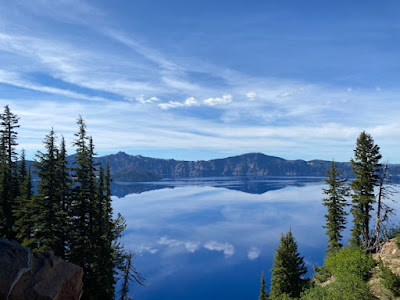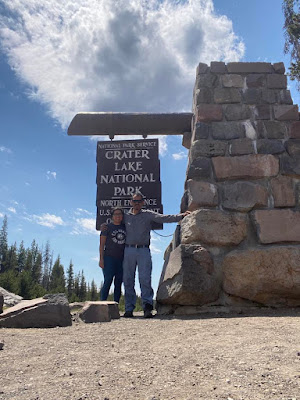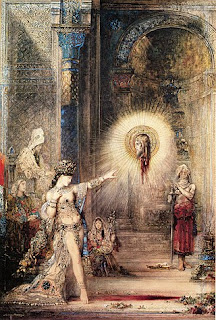Crater Lake National Park: Road Trips from Los Angeles
By Armando Ortiz
Crater Lake National Park: Nature’s Geologic Wonder Awaits
Situated in South Central Oregon among pine forests that stretch far and wide lies a breathtaking wonder: Crater Lake National Park. Once a giant volcano that surpassed all others in the American Northwest, this park now offers waterfalls, lakes, rivers and creeks surrounding this ancient caldera. If you’re in search of a National Park adventure that unveils geologic wonders and mysterious lakes, this post is made for you. Let’s delve into what you will and might see and discover if you embark on a trip to this captivating destination.
The Road Trip: Unveiling Nature’s Magic
Driving to Crater Lake is easier than it looks, and the drive promises something magical as you drive through diverse landscapes. Road trips have a certain magic to them that cannot be replicated with air travel. Starting the seven hundred mile road trip from Los Angeles, you take the i-5 freeway north. Soon you’ll be driving through the San Joaquin Valley that’s peppered with agricultural towns and golden rolling hills. As you approach Sacramento there might be some traffic, but soon you continue your drive along what seems to be an endless valley.
Progressing further north, the landscape begins to change and you see oak trees along the edge of the highway, as you continue on it becomes a mix of oaks and pines. At Redding, pines begin to paint the land a deep green, and this will be a good place to stock up on groceries and gas.
At a distance you’ll begin to see the majestic snow capped Mount Shasta, California’s own version of Mt. Fuji. Once you drive past Weed, CA you will take the 97 which will take you northeast. As you keep driving you’ll see views of Mt Shasta and appreciate its grandeur. Driving through the tiny town of Dorris, CA you’ll cross into the Klamath Lakes of Oregon, and be ever so nearer to Crater Lake.
Admire the lake, and consider that thousands of years ago the lake was more than ten times the size than it is today. More recently the lake was mostly drained to have agriculture be a more viable enterprise for the Americans that settled there in the late 1800s to early 1900s. The town of Klamath Falls will be a good place to fill up on gas and get some snacks or buy some ice for your cooler. You continue north and keep driving along what seems like the edge of an endless waters edge until you begin a long stretch of pine forest and reach Highway 138.
Campgrounds and Water Wonders: Nature’s Bounty
As you approach Crater Lake National Park many campgrounds await, though you must make sure to have made your reservation months ahead of time. To the north and along the edge of Diamond Lake are three campgrounds: Broken Arrow, Thielsen View and Diamond Lake. To the west and southwest, along highway 62 you’ll find campgrounds along the creeks that feed into the Rogue River: Mill Creek, River Bridge, Natural Bridge, Abbott Creek and Union Creek Campgrounds. The park itself has two campgrounds. The true magic of this entire area lies in its creeks, rivers, lakes and waterfalls, but be prepared for mosquitos and bugs by bringing bug spray.
We camped at Diamond Lake campground and had lakeside views. Along this campground, various activities are available for you. Rent paddle boats, fishing boats, or kayaks to explore the lake. An easy and mostly flat bicycle road follows the lake’s edge, making it a tranquil ride within the forest. The campground store offers freshly made pizza, decadent ice cream and handcrafted sandwiches.
The Crater: Awe-Inspiring Views Await
Once at Crater Lake prepare to be spellbound by the wonders of its rim. Every side of its rim has awesome panorama views of Mt Shasta and the Klamath Mountains that add to the magic of the place. Along the road are waterfalls that are very cold for you to cool off and dip your feet in, but be sure to wear sunscreen because the sun is intense.
Taking a short hike to the crater’s rim rewards you with breathtaking views of Wizard Island set against the deep blue waters. Hiking down to the water's edge gives you a chance of diving into the cold waters and is highly recommended. Once you come out of the water you will feel refreshed. If you decide to take a dive make sure to open your eyes to see the mesmerizing blue glow that envelops you.
Exploration and Wonder: An Adventure Worthwhile
You can spend more than one day hiking and backpacking around the crater that range from easy to strenuous. When we were there the southeastern section of the lake was closed for road repairs, so try to get as much information on road conditions as you enter the park. The visitor center has a cafeteria offering fast food options like sandwiches, hotdogs, and chicken tenders. We bought some chicken tenders, along with some cold drinks and had lunch under the shade of some majestic pine trees.
Meeting a park ranger you’ll learn more about the park’s history. Crater Lake was once a 12,000 foot tall volcano named Mount Mazama by scientists today. Its eruption cut away a mile’s worth of height from its top which made it the caldera we call Crater Lake. From a distance, snow-covered volcanoes like Mt. Shasta stand in silent majesty on the California side.
Conclusion: Embrace the Magical Mystery
Crater Lake National Park is a place that has an amazing geologic history with an environment that is perfect to enjoy in the Summers. The drives through the surrounding forest and edge of the caldera make a visit here worthwhile. Whether you bring your family, gather your friends, or set off on a solo escape, Crater Lake’s magic awaits- an adventure well worth embracing.










